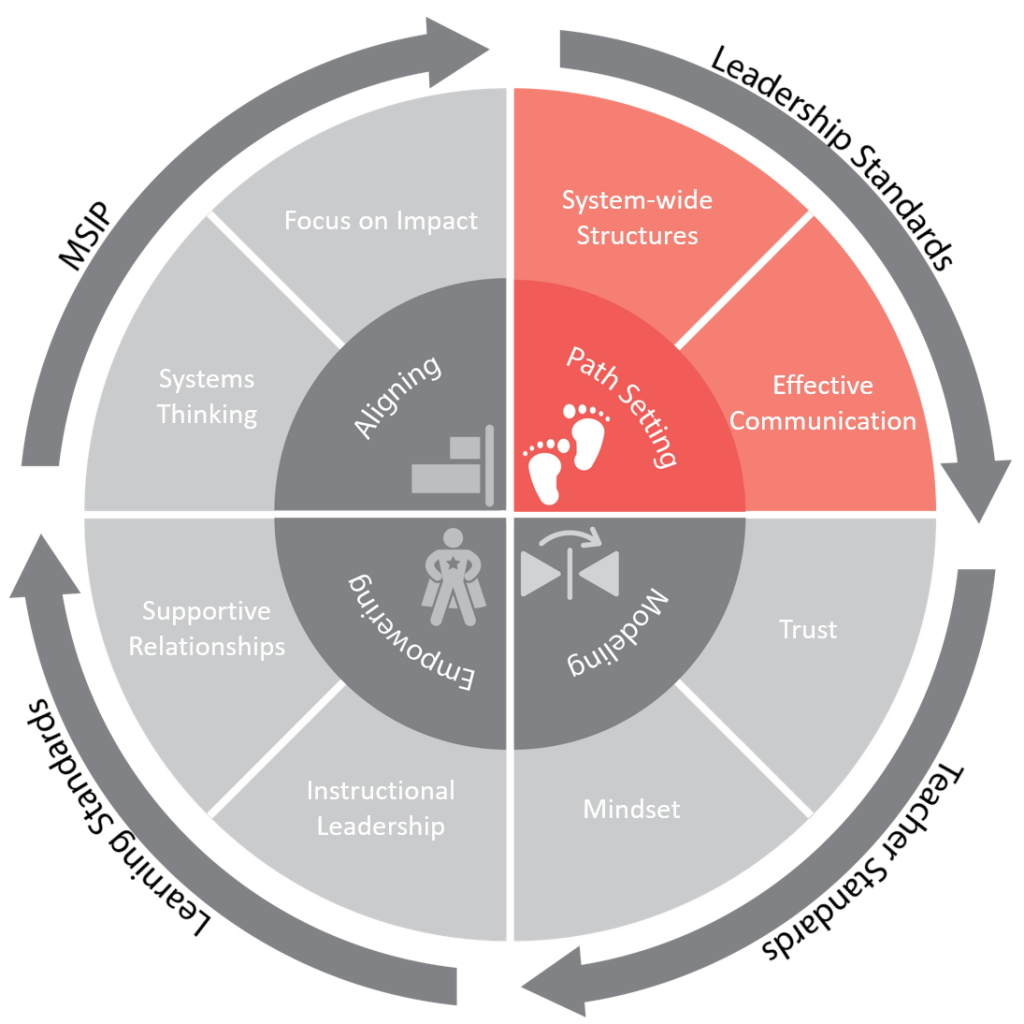ESSENTIAL FUNCTION 2: OVERVIEW OF PATH SETTING

There is a fundamental difference between the concepts of change management and change leadership. Change management refers to strategies used to keep the change process “under control” or minimize problems associated with changes. Change leadership, however, is associated with strategies used to drive change and make the change process work more efficiently.
In the following video, Dr. John Kotter describes the difference between change management and change leadership. As you listen to this video, make notes as to the responsibilities and actions a change manager makes in comparison to a change leader.
Change Management vs. Change Leadership — What’s the Difference? (5:04 min) (Kotter, 2012).
Reflective Questions
What are examples of change management that occur in your school building or district?
What are examples of change leadership that occur in your school building or district?
What are opportunities for increasing or improving change leadership?
The key word in “Building Leadership Teams” and “District Leadership Teams” is Leadership. Collaboratively, school leadership teams have the responsibility of establishing a path for data-informed school improvement. This path must be supported by (a) district-wide structures (policies, practices, and procedures) and (b) effective communication and collaboration strategies. The path, structures, and collaborations are essential for leading school improvement. Essential Function 2 focuses on operationalizing these components within your district.
Essential Function 2: Leadership sets a path for continuous improvement that is data informed and occurs within a collaborative school culture.
Leadership establishes a sustainable school improvement approach that includes all of the criteria below.
- A high-quality District Leadership Team as evidenced through member roles, team function, and records of meetings.
- Building Leadership Teams as evidenced through member roles, team function, and records of meetings.
- Collaborative Team structures that distribute responsibility resulting in all educators (administrators and teachers) assuming collective responsibility for the well-being of the student population.
- A process for aligning and monitoring performance goals throughout the district both across buildings and instructional levels, as well as within buildings and grade levels.
- A communication plan that provides information and data on a formal and frequent basis to communicate with district, building, and community collaborators.
- A district-wide open communication network that supports dialogue and discussion across the district about teaching and the recognition/identification of high impact practices.
Download the Practice Profile for Leadership for Effective Implementation of District-Wide Evidence-Based Practices
Reflective Questions
Do you believe increased change leadership would have a positive impact in your dsitrict/building?
How would you describe the role of the District Leadership Team in the implementation of change leadership?
As an educational leader, have you spent more of your time as a change manager or a change leader?


